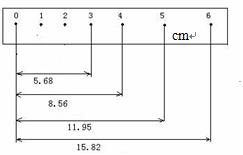In October 1961 at Crowley Field in Cincinnati Ohio an old deaf gentleman named William E. Hoy stood up to throw the first ball of the World Series. Most people at Crowley Field on that day probably did not remember Hoy because he had retired(退休) from professional baseball 58 years earlier in 1903. However he had been an outstanding player and the deaf people still talk about him and his years in baseball.
William E. Hoy was born in Houckstown Ohio on May 23, 1862. He became deaf when he was two years old. He attended the Columbus Ohio School for the deaf. After graduation he started playing baseball while working as a shoemaker.
Hoy began playing professional baseball in 1886 for Oshkosh(Wisconsin) of the Northwestern League. In 1888 he started as an outfielder(外场手) with the old Washington Senators. His small figure and speed made him an outstanding base runner. He was very good at stealing bases during his career. In the 1888 major league season he stole 82 bases. He was also the Senators’ leading hitter in 1888. Hoy was clever and he threw right-handed and batted left-handed. On June 19,1889 he threw out three batters(击球手) at the plate from his outfield position.
The arm signals used by judges today to show balls and strikes began because of Hoy. The judge lifted his right arm to show that the pitch was a strike and his left arm to signal that it was a ball.
For many years people talked about Hoy’s last ball game in 1903. He was playing for Los Angeles of the Pacific Coast Winter League. It was a memorable game because Hoy hit a wonderful ball which won the game. It was a very foggy day and therefore very hard to see the ball. In the ninth inning(棒球的一局) with two men out, Hoy managed to catch a fly ball to make the third out in spite of the fog. Los Angeles defeated their opposition and won the game.
After he retired Hoy stayed busy. He ran a dairy farm near Cincinnati for 20 years. He also became a public speaker and traveled giving speeches. Until a few years before his death he took 4-10 mile walks several mornings a week. On December 15, 1961 William Hoy died at the age of 99.
小题1:In which order did the following things happen in Hoy’s life?
a. Hoy worked as a shoemaker.
b. Hoy began to run a diary farm.
c. Hoy played a memorable game in the heavy fog.
d. Hoy threw the first ball of the World Series.
e. Hoy became deaf.
A.d e a c b
B.e a c b d
C.d a e c b
D.e a b c d小题2:We can infer from the last paragraph that Hoy _______ in his late years.
A.became famous
B.led a relaxed life
C.traveled around the world
D.was in good physical condition小题3:This passage is mainly about _______.
A.a deaf player devoted to the game of baseball
B.baseball game rules and important players
C.the rise in the social position of the deaf people
D.where the baseball judge hand signals came from小题4:What can be inferred from this passage?
A.Hoy was the greatest baseball player in his time.
B.Speaking and listening are not necessary in baseball games.
C.The judge had to study the hand signals very seriously.
D.Hoy’s family encouraged him to become a baseball player.
小题1:B
小题2:D
小题3:A
小题4:A
本文介绍了美国20世纪初最杰出的棒球选手Hoy不平凡的一生。
小题1:细节题。此题要求对事件发生的先后顺序进行排序。可用首尾定位法,即找到第一个发生的事件 (e. Hoy became deaf.),再找到最后一个发生的事件 (d. Hoy threw the first ball of the World Series.),故可排除A、C。再进行比较可知B最佳。
小题2:推断题。根据Until a few years before his death he took 4-10 mile walks several mornings a week.,可见在他生命的最后岁月里,他的身体状况很好。
小题3:主旨题。纵观全文可知。
小题4:推断题。根据he stole 82 bases…the Senators’ leading hitter…threw out three batters…managed to catch a fly ball to make the third out in spite of the fog. 等细节,可以判断Hoy是他那个时代最杰出的棒球选手。






